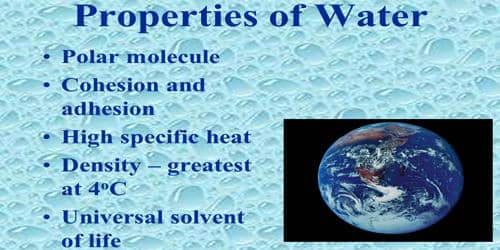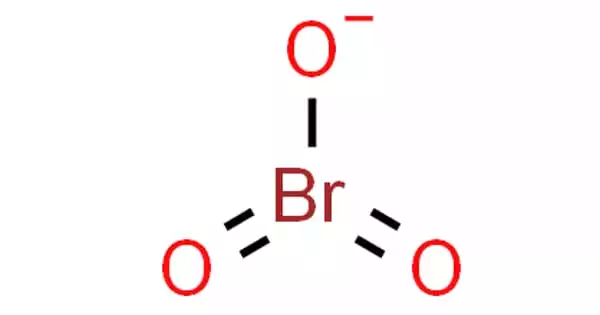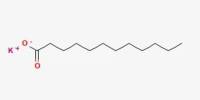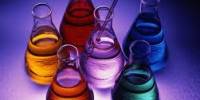Properties of Water
Water (H2O) is a polar inorganic compound that is at room temperature a tasteless and odorless liquid, which is nearly colorless apart from an inherent hint of blue. With 70% of our earth being ocean water and 65% of our bodies being water, it is hard to not be aware of how important it is in our lives. It is by far the most studied chemical compound and is described as the “universal solvent” and the “solvent of life”.
Water is the most abundant compound on Earth’s surface. It is the most abundant substance on Earth and the only common substance to exist as a solid, liquid, and gas on Earth’s surface. In nature, water exists in the liquid, solid, and gaseous states. It is in dynamic equilibrium between the liquid and gas states at 0 degrees Celsius and 1 atm of pressure. It is also the third most abundant molecule in the universe (behind molecular hydrogen and carbon monoxide). The properties of water make it suitable for organisms to survive in during differing weather conditions.
The main properties of water are its polarity, cohesion, adhesion, surface tension, high specific heat, and evaporative cooling.
- Polarity – A water molecule is slightly charged on both ends. This is because oxygen is more electronegative than hydrogen.
- Cohesion – Cohesion creates surface tension which is why if you fill a spoon with water, drop by drop, the water volume will actually be bigger than the spoon’s surface before the waterfalls off.
- Adhesion – Similar to cohesion, but adhesion is when the hydrogen bonds in water allow for the water molecules to be held to another substance.
- High Specific Heat – Specific heat is the amount of heat absorbed or lost for 1g to change 1ºC, which in the case of water, is pretty high.
Water is also essential for life. Water molecules form hydrogen bonds with each other and are strongly polar. This polarity allows it to dissociate ions in salts and bond to other polar substances such as alcohols and acids, thus dissolving them. Its hydrogen bonding causes its many unique properties, such as having a solid form less dense than its liquid form, a relatively high boiling point of 100 °C for its molar mass, and high heat capacity.
Water is amphoteric, meaning that it can exhibit properties of an acid or a base, depending on the pH of the solution that it is in; it readily produces both H+and OH−ions. Related to its amphoteric character, it undergoes self-ionization. The product of the activities, or approximately, the concentrations of H+and OH−is a constant, so their respective concentrations are inversely proportional to each other. Water is the major constituent of almost all life forms. Most animals and plants contain more than 60% water by volume. Without water, life would probably never have developed on our planet.
















